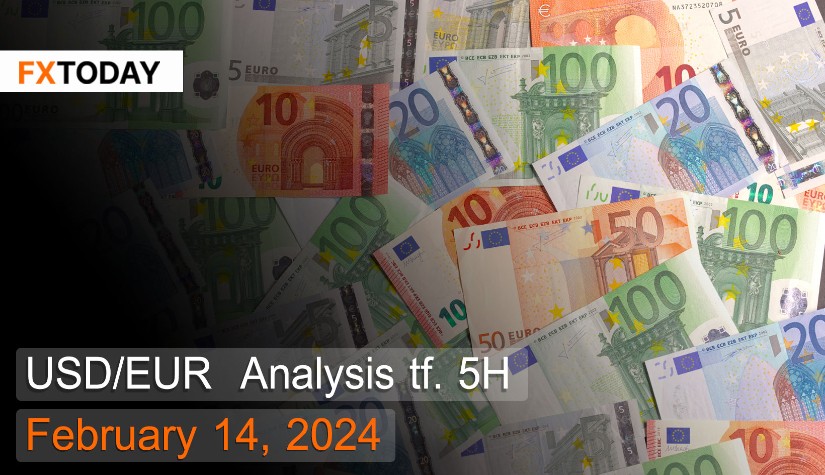The economy of the Eurozone has begun to slow down.
The euro weakened to 0.93 against the US dollar. This is due to investors lowering their expectations of the US Federal Reserve reducing interest rates. Additionally, there has been intense speculation about US inflation, with the inflation rate rising to 3.1% annually in January, higher than the market's forecast of 2.9%. Recently, investors have also reduced expectations of the European Central Bank (ECB) lowering interest rates.
Retail sales in the Eurozone decreased by 1.1% month-on-month in December, indicating a rapid decline in trade, largely influenced by continuous high inflation rates and increased borrowing costs impacting household spending. Sales of food and beverages decreased for the third consecutive month, and online sales also dropped by 3.7%.
The seasonally adjusted unemployment rate in the Eurozone remained unchanged at 6.4% in December, with the number of unemployed decreasing by 17,000 compared to the previous month, totaling 10.909 million. Youth unemployment, however, decreased to 14.4% from 14.5% in November, with Spain having the highest unemployment rate at 11.7%, followed by France at 7.3%.
The Eurozone economy stagnated in the fourth quarter of 2023, contracting by 0.1%. Spain and Italy were the only countries with positive economic growth, while France's economy stagnated and Germany's contracted by 0.3%. Economic trends in 2024 continue to face challenges from high costs and borrowing rates, along with reduced domestic and international demand.
Consumer expectations surveyed by the ECB show uncertainty regarding inflation forecasts, with a slight increase in the three-year inflation forecast to 2.5% from 2.4%. Expectations for the unemployment rate in the next 12 months decreased to 11.2% from 11.4%, while house prices are expected to increase by 2.2% in the next 12 months.
The Eurozone Manufacturing Purchasing Managers' Index (PMI) increased to 46.6 in January, driven by new orders and the output index, which rose by over 2 points to 55%. Despite the PMI indicating contraction, factories in the Eurozone have significant reserve production capacity and are ready to continue operations. However, ongoing job cuts have reduced at a slower rate.
Techical analysis data (5H)
Resistance: 0.9336, 0.9342, 0.9345
Source: Investing.com
Buy/Long 1: If the price touches support in the price range of 0.9324 - 0.9328 but cannot break the support at 0.9328, you may set a TP at approximately 0.9342 and SL at around 0.9319 or according to your acceptable risk.
Buy/Long 2: If the price breaks the resistance in the price range of 0.9336 - 0.9342, you may set a TP at approximately 0.9345 and SL at around 0.9324 or according to your acceptable risk.
Sell/Short 1: If the price touches resistance in the price range of 0.9336 - 0.9342 but cannot break the resistance at 0.9336, you may set a TP at approximately 0.9324 and SL at around 0.9345 or according to your acceptable risk.
Sell/Short 2: If the price breaks the support in the price range of 0.9324 - 0.9328, you may set a TP at approximately 0.9319 and SL at around 0.9342 or according to your acceptable risk.
Pivot point February 14, 2024 02:19 PM. GMT+7
|
Name
|
S3
|
S2
|
S1
|
Pivot Points
|
R1
|
R2
|
R3
|
| Classic | 0.9319 | 0.9324 | 0.9328 | 0.9333 | 0.9336 | 0.9342 | 0.9345 |
| Fibonacci | 0.9324 | 0.9327 | 0.933 | 0.9333 | 0.9336 | 0.9339 | 0.9342 |
| Camarilla | 0.933 | 0.9331 | 0.9332 | 0.9333 | 0.9333 | 0.9334 | 0.9335 |
| Woodie's | 0.9319 | 0.9324 | 0.9328 | 0.9333 | 0.9336 | 0.9342 | 0.9345 |
| DeMark's | - | - | 0.9327 | 0.9333 | 0.9335 | - | - |
















